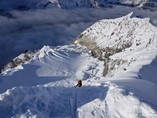Is Fear of Failure Keeping You Stuck? (How to Break Free)
Ohhh Ramsay Banna
You've got big dreams. You want to start that business, ask for the promotion, or finally do the thing you've been putting off out of fear. But every time you psych yourself up, the gremlins of self-doubt creep in. What if you fall flat on your face? Fail spectacularly? Let everyone down? We've all been there. Failure is scary. But you know what's scarier? Regret. Not trying. Letting fear hold you back from living your best life. The truth is, failure is part of the journey. It helps us grow. In this article, we'll talk about why we fear failure, how to reframe it, and small steps you can take right now to get unstuck.
Failure doesn't have to stop you; it can propel you forward if you let it.
Understanding Fear of Failure: What Is It and Why Do We Have It?
What is Fear of Failure?
Fear of failure is that nagging voice in your head warning you not to take risks. It's the anxiety and self-doubt that creeps in when you're stepping outside your comfort zone. Fear of failure can manifest as procrastination, self- sabotage, perfectionism, or avoidance of new challenges.
It's a natural response hardwired into our brains to protect us from potential dangers. But in today's world, the consequences of failure are rarely life-threatening. Yet that primal fear can still paralyze us from pursuing our goals.
Why Do We Fear Failure?
There are several reasons why we develop a fear of failure:
• Past Experiences - If you've failed at something before, it can make you overly cautious about risking failure again.
• Perfectionism - Having unrealistically high expectations can make any shortcoming feel like a failure.
• Low Self-Esteem - Doubting your abilities makes you more fearful of confirming those doubts through failure.
• Harsh Critics - Overly critical parents, teachers or partners can instill a fear of not measuring up.
• Society's Stigma - Our culture often sees failure as something to be ashamed of rather than a learning experience.
While a little fear can motivate us, too much fear of failure becomes counterproductive. It keeps us stuck in our comfort zones, unwilling to take the risks needed for growth and achievement.
For more information, contact Ramsay Banna










